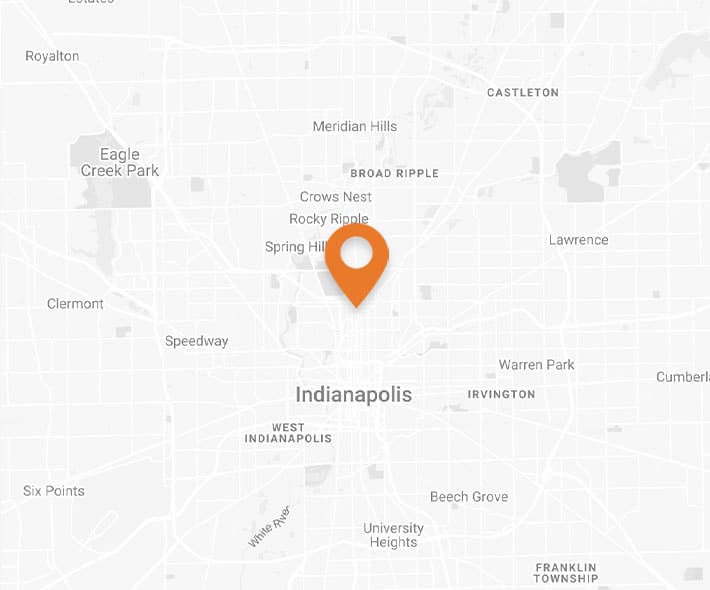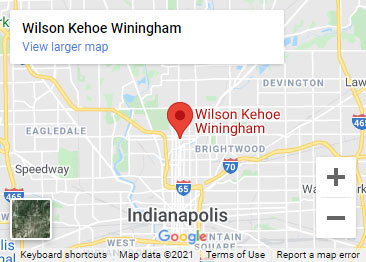Navigating Indiana’s Comparative Fault Law: What it Means for Your Car Accident Claim
June 23, 2025 | By Wilson Kehoe Winingham staff
Car accidents are stressful enough without worrying about who should pay for your injuries. Unfortunately, collisions often give rise to complex legal and insurance disputes, especially when there’s shared responsibility among the drivers involved.
Our Indianapolis car accident injury lawyers explain how Indiana’s comparative fault law affects your injury case and your ability to pursue compensation after a crash.

What Is Indiana’s Modified Comparative Fault Law?
Indiana follows a modified comparative fault rule with a 51% bar. This legal standard applies to both courtroom verdicts and can influence insurance companies’ negotiation tactics in out-of-court settlements.
Your degree of fault can have significant effects on Indiana car accident compensation. Under modified comparative fault:
- You can recover compensation only if you are 50% or less at fault for the crash.
- The amount of compensation you receive is reduced by your percentage of fault. For example, if you are awarded damages of $100,000 but are found to be 25% at fault, your compensation is reduced by 25%, leaving you with $75,000.
- If you’re assigned more than 51% of the fault for the crash, you are barred from recovering any damages.
How Fault Is Determined in an Indiana Crash Case
Liability is established by examining the actions of all parties involved in the crash and assigning a percentage of blame to each. Investigators and insurance adjusters consider several factors when predicting how a judge or jury may apportion fault, including:
- Witness statements
- Traffic laws
- Physical evidence from the scene
- Dash cam and police body cam footage
- Expert testimony, such as accident reconstruction
Example Scenarios of Comparative Fault in Action
To better understand how Indiana’s law plays out, here are a few real-world-style scenarios:
Scenario 1: Rear-End Collision With Shared Fault
Suppose you’re driving on I-465 near Indianapolis and rear-end another vehicle during rush hour traffic. Typically, the trailing driver is assumed to be at fault. But in this case, the driver in front had non-functioning brake lights, which contributed to the accident.
The jury assigns you 70% of the fault and 30% to the other driver. Since your fault exceeds 50%, you are not eligible to recover damages, even though the other driver shared some blame.
Scenario 2: Intersection Crash
Imagine you’re approaching an intersection and begin making a left turn. Another vehicle is speeding through the intersection from the opposite direction and hits your car.
In court, it’s determined that you failed to yield the right-of-way, but the other driver was also speeding excessively. You are found to be 40% at fault, and the other driver is assigned the remaining 60%.
You’re awarded $50,000 from the other driver’s insurance company, but because of your 40% fault, your final compensation is reduced to $30,000.
Scenario 3: Multiple Vehicles Involved
Picture a three-car pileup on a snowy road in Fort Wayne. Vehicle A brakes suddenly, Vehicle B rear-ends A, and then Vehicle C crashes into B. Each driver blames the others.
After the trial, the fault is distributed as follows:
- Driver A: 10%
- Driver B: 30%
- Driver C: 60%
If Driver B sues Driver C, their compensation would be reduced by 30%, but they could still recover 70% of their awarded damages. Driver A could recover 90% of their awarded damages. Driver C, however, cannot recover anything if they attempt to counterclaim since they are more than 51% at fault.
Comparative Fault and Insurance Settlements
Understanding Indiana’s comparative fault rules is just as important when negotiating with insurance companies as it is in court. Insurers use these laws to reduce their liability and payouts, especially in crashes involving multiple vehicles or disputed testimony. If they believe they can demonstrate that you were even partially at fault at trial, they’ll likely offer less or deny the claim altogether if they can argue you were mostly responsible.
It’s crucial to avoid admitting fault at the accident scene or during early conversations with insurance adjusters. Even seemingly innocent statements like “I didn’t see them coming” can be used to shift blame onto you. Sharing fault in an Indiana car accident claim could potentially cost you thousands of dollars, so you must think carefully before accepting a settlement.
The Importance of Sound Legal Advice After an Indiana Car Accident
Given the complexities of Indiana’s comparative fault law, it’s wise to consult with a crash injury attorney soon after a collision. An experienced lawyer can:
- Help gather and preserve evidence
- Determine who’s at fault in an Indiana car accident
- Accurately assess fault percentages
- Negotiate with insurers
- Represent you in court if necessary
Contact Our Trusted Car Crash Injury Attorneys
Indiana’s modified comparative fault system seeks to allocate car accident compensation fairly based on each party’s level of responsibility. While it can protect drivers from being held fully liable for shared accidents, it also introduces complexity and potential pitfalls, especially when fault is hotly contested.
If you were involved in a crash in Indiana, comparative fault plays a major role in your claim. At Wilson Kehoe Winingham, we can help you make informed decisions about your recovery.
Please call us at (317) 920-6400 or contact us online for a free, no-obligation case evaluation.
Contact Us
Let WKW put our experience to work for you. Contact us for your free case evaluation.
Or, call us today at (317) 920-6400


